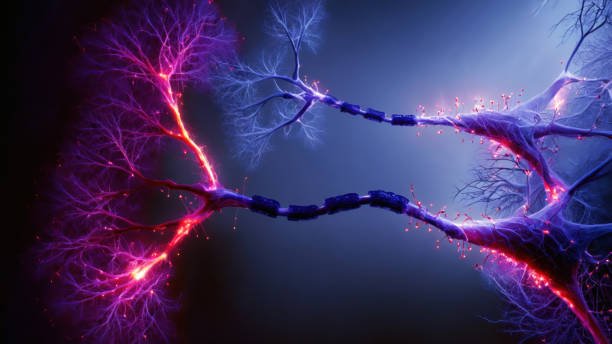Researchers at UT Southwestern Medical Center have recently made a breakthrough discovery that explores sex-specific differences in how fat accumulates in muscle and bone. This new research sheds light on patterns of fat infiltration in skeletal muscle, subcutaneous tissue, and bone marrow, and could lead to novel treatments for age-related diseases. Published in Diagnostics, their findings reveal crucial differences between men and women that are influenced by age, body mass index (BMI), and other physiological factors.
Senior author Jimin Ren, Ph.D., an Associate Professor in the Advanced Imaging Research Center (AIRC) and in Radiology at UT Southwestern, emphasized the importance of this research in understanding musculoskeletal disorders, a leading cause of disability in the U.S. These disorders are particularly concerning due to their significant impact on both quality of life and longevity. Dr. Ren stated, “This study identifies key contributors to muscle fat infiltration (MFI), a harmful accumulation of fat within skeletal muscle that can lead to muscle atrophy and dystrophy.” MFI refers to the infiltration of fat within muscle tissue, which can impair its function and eventually contribute to the loss of muscle mass and strength, conditions that become more common as individuals age.
The study involved analyzing magnetic resonance imaging (MRI) scans from 107 patients at UT Southwestern, including 64 men and 43 women, who ranged in age from 11 to 79. The study group was diverse in terms of ethnicity and BMI, offering valuable insights into the ways fat accumulates in muscle and bone across different populations. The focus of the study was on the lower extremities, where significant fat infiltration was observed.
One of the key findings from the research was the way that MFI is related to age in women and body weight in men. In women, the study found that MFI increases significantly with age, pointing to age-related changes as a primary driver of fat infiltration in muscle tissue. In men, however, MFI was more strongly associated with body weight, suggesting that maintaining a healthy weight may be more crucial for preventing fat buildup within muscle tissue. The average thickness of subcutaneous fat, the fat found just beneath the skin, was also examined and found to be about twice as thick in women (8.9 millimeters) compared to men (4.3 millimeters). This difference in fat distribution was further influenced by age, with women showing an increase in subcutaneous fat as they grew older, while men, particularly those who were not obese, experienced a decrease in this type of fat with age.
In addition to analyzing MFI and subcutaneous fat, the researchers found a relationship between fat infiltration in muscle and changes in bone marrow cross-sectional area (BMA). This suggests that there is a connection between muscle and bone health. Weakened bone structure may make it easier for fat to infiltrate into the surrounding muscles, contributing to physical challenges that increase the risks of falls, fractures, and various metabolic disorders. This connection highlights the importance of maintaining overall musculoskeletal health, as muscle and bone function are closely linked.
Skeletal muscle plays a critical role in the body’s metabolic functions, especially glucose metabolism. As Dr. Ren pointed out, “Skeletal muscle is the body’s largest organ by mass and plays a critical role in regulating glucose metabolism.” When fat infiltrates muscle, it impairs the muscle’s ability to process glucose efficiently. This dysfunction can lead to insulin resistance, a key feature of many chronic health conditions such as obesity, heart failure, stroke, sarcopenia (the progressive loss of muscle mass and strength), osteoporosis (bone weakness), chronic kidney disease, and Type 2 diabetes. The new findings underscore how the accumulation of fat within muscle tissue can have broad and severe implications for an individual’s overall health and metabolic balance.
The study also provided additional insights into the distinct challenges that men and women face as they age. In women, hormonal changes, particularly those associated with menopause, seem to exacerbate the risk of developing age-related muscle and bone conditions, such as sarcopenia and osteoporosis. On the other hand, in men, the more direct correlation between fat infiltration and body weight highlights the critical role of maintaining a healthy weight in order to protect muscle function and preserve metabolic health. These differences underline the importance of addressing sex-specific factors when considering interventions to prevent or manage age-related diseases.
The researchers’ work has far-reaching implications, offering valuable information that can be applied to the development of personalized health strategies tailored to individuals’ age, sex, and BMI. Based on the findings, targeted recommendations for exercise, nutrition, and medical therapies could be created to support musculoskeletal health and counteract the effects of aging. Dr. Ren suggested that biomarkers such as subcutaneous fat thickness, intramuscular fat levels, and BMA could be used in clinical settings to noninvasively assess muscle metabolic health and monitor the risk of developing conditions such as sarcopenia and osteoporosis.
The researchers hope that their work will lead to better early detection and more effective treatment of these conditions, improving the overall quality of life for aging adults. By focusing on the relationship between fat accumulation in muscle and bone, they are providing new potential avenues for developing therapies that target both muscle and skeletal health simultaneously. Dr. Talon Johnson, a postdoctoral research fellow and the lead author of the study, noted, “By linking fat infiltration within muscle to fat in the bone marrow, the study highlights a potential avenue for dual-targeted therapies that support both muscle and bone.” This integrated approach may lead to a deeper understanding of how age-related changes in the body can be addressed through comprehensive interventions.
Moreover, the study encourages further exploration into dual-targeted therapies. If developed, these therapies could offer a more holistic approach to treating metabolic and musculoskeletal disorders, which are becoming increasingly prevalent among the aging population. Current clinical strategies often focus on either bone health or muscle health independently, but an integrated perspective could lead to a more effective way to prevent or slow down the onset of diseases like osteoporosis, sarcopenia, and Type 2 diabetes.
Reference: Talon Johnson et al, Sex Differences in Fat Distribution and Muscle Fat Infiltration in the Lower Extremity: A Retrospective Diverse-Ethnicity 7T MRI Study in a Research Institute Setting in the USA, Diagnostics (2024). DOI: 10.3390/diagnostics14202260






